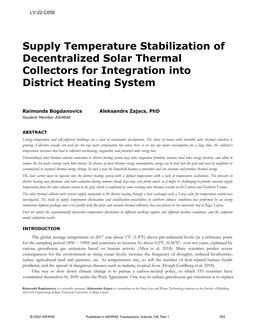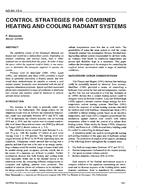A theoretical analysis and simulation results are presented to explore the performance of run-around heat recovery systems under a wide range of operational conditions using aqueous glycol or water as the coupling fluid. The basic theory of a run-around heat recovery system with exhaust and supply air coils, employing a counterflow coupling fluid is revisited to identify the system operating characteristics and configuration that will maximise heat recovery for ventilation systems. A numerical model is then used to study the effect of temperature-dependent properties in the coupling fluid, where the supply and exhaust air heat exchanger coils are sub-divided into a number of elements. These numerical results, for turbulent flow and large temperature swings in the coupling fluid, show that errors of up to 25% for overall effectiveness, or 50% for relative overall effectiveness may result, when low coil-tube Reynolds numbers are used, if the coupling fluid property variations are simply averaged in the calculation of the overall effectiveness of run-around systems. This study implies that such errors are negligible for run-around heat recovery systems with coupling fluid Reynolds numbers larger that 6,000.
KEYWORDS: temperature, properties, performance, heat recovery, ventilation, turbulent flow, temperature swing, heat exchangers, run around coils, Reynolds numbers, counterflow heat exchangers, exhaust air
Citation: ASHRAE Trans. 1992, vol.98, Part 1, Paper number 3594, 551-562, 13 figs., refs.
Product Details
- Published:
- 1992
- File Size:
- 1 file , 1.3 MB
- Product Code(s):
- D-17866


